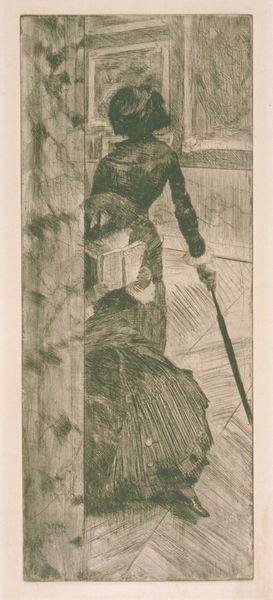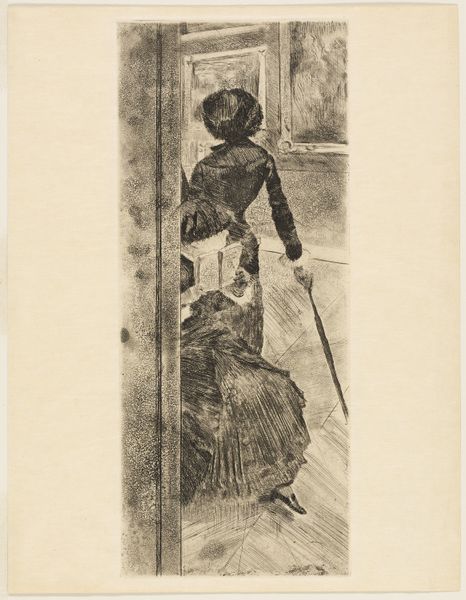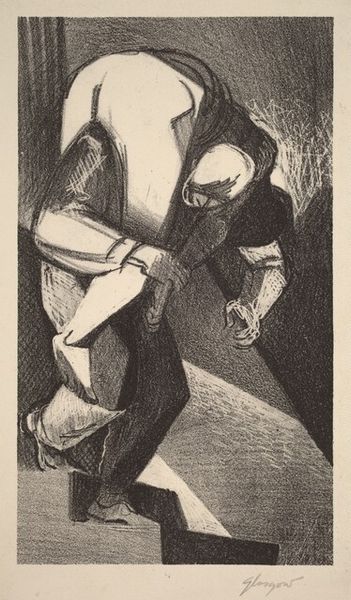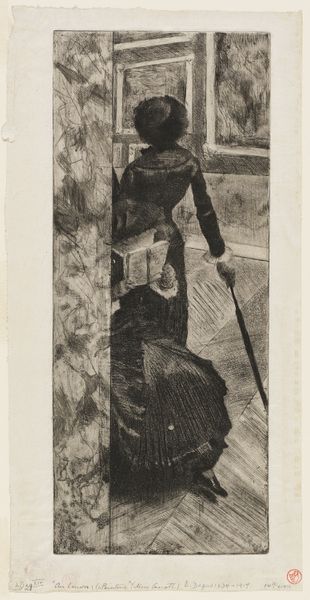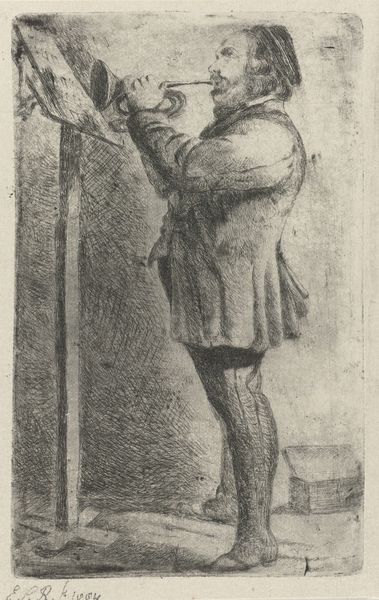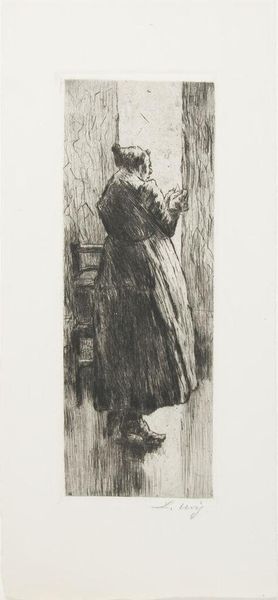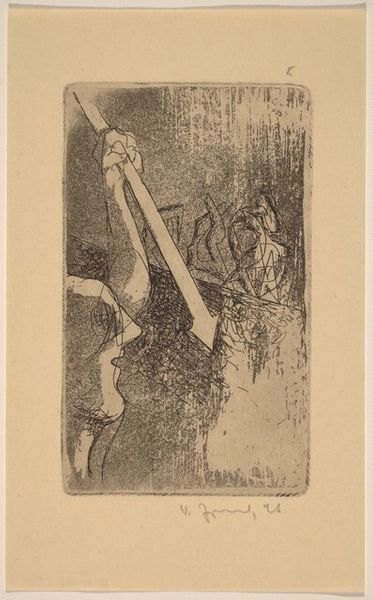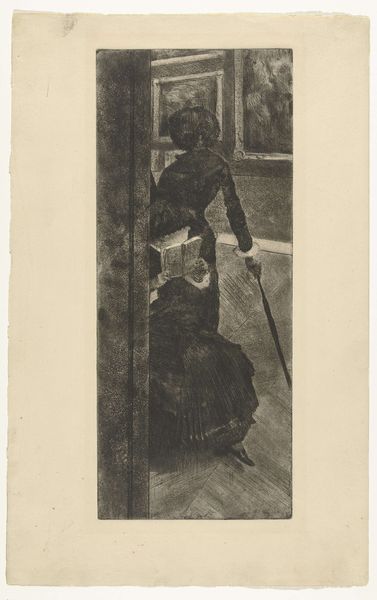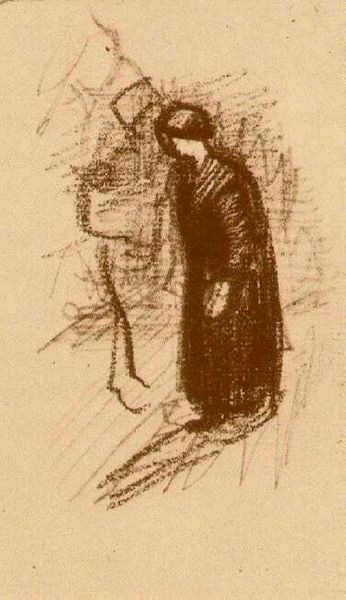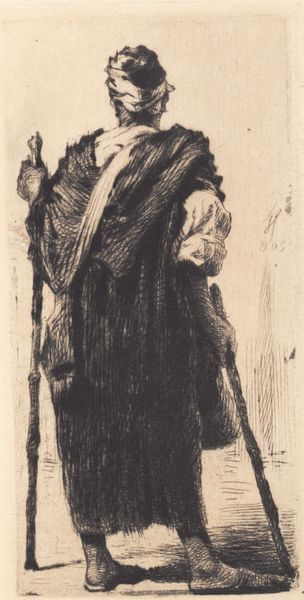
print, etching
#
portrait
#
figurative
# print
#
impressionism
#
etching
#
landscape
#
figuration
#
portrait drawing
Copyright: Public Domain: Artvee
Editor: Here we have Degas' etching, "Mary Cassatt at the Louvre: The Paintings Gallery," dating from 1879-1880. It's quite striking, almost like a snapshot in time. There's this intense focus on the figure, back turned to us, amidst the grandeur of the Louvre. What feelings or thoughts does it evoke for you? Curator: Well, my dear, it makes me feel like a voyeur, peering into a private moment. Degas captures that exquisite tension between observation and intrusion, doesn't he? Notice how the architectural lines converge, almost pushing Cassatt into the pictorial space, while simultaneously, she remains aloof, immersed in her own experience with the art before her. Tell me, what do you make of her isolation? Editor: That's interesting. I hadn't thought of it as voyeuristic, but I see what you mean! It does seem very personal, especially because we can't see her face. Perhaps her isolation is intentional? A reflection on the solitary act of experiencing art? Curator: Precisely! And consider the era, this nascent push for women in the arts. Degas gives us Cassatt as an active agent, a viewer, a critic perhaps even, amidst the hallowed halls, rather than merely a muse. A daring move, don’t you think? This etching is not merely a portrait, but a statement, a question posed about the role of women within the art world. Does this make you reconsider your initial impression? Editor: Absolutely! Seeing it as a statement changes everything. It's not just a candid glimpse; it's a commentary. Thank you; I appreciate your perspective. Curator: My pleasure! Art, like life, reveals its secrets to those who truly observe and allow it to resonate within, prompting introspection and conversation.
Comments
No comments
Be the first to comment and join the conversation on the ultimate creative platform.
